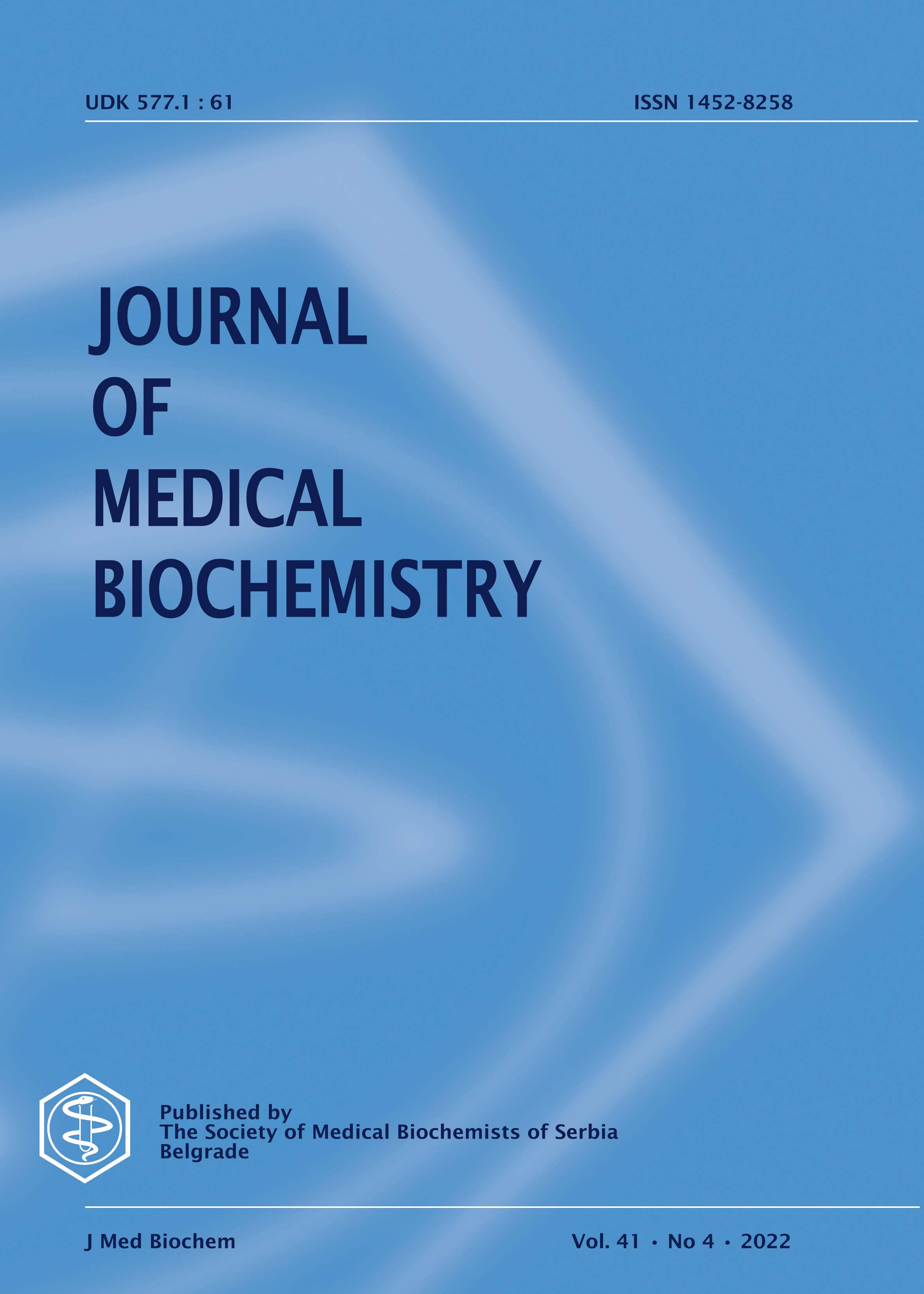Effects Of COVID-19 Infection on Thyroid Functions
Abstract
Giriş: COVID-19, tiroid bezi ve hipotalamus-hipofiz-tiroid ekseninin yanı sıra birçok endokrin dokuyu etkileyebilir. COVİD-19 enfeksiyonunun bazı çalışmalarda tiroid hormonlarını baskıladığı, bazılarında ise subakut tiroidite neden olduğu gösterilmiş ve etkileri hala tam olarak bilinmemektedir. Çalışmamızın amacı, PCR + COVID-19 ile enfekte hastalarda tiroid fonksiyonlarını, klinik bulguları, biyokimyasal ve inflamatuar belirteçleri retrospektif olarak değerlendirmek; ve anormal tiroid fonksiyon testleri (TFT) ile klinik ve laboratuvar bulguları arasındaki ilişkiyi ve potansiyel prognostik öneme sahip olup olmadığını değerlendirmektir.
Yöntemler: 1 Mart - 1 Nisan 2021 tarihleri arasında Mersin İl Eğitim ve Araştırma Hastanesi'ne COVID-19 enfeksiyonu nedeniyle başvuran 18 yaş ve üzeri, 201 hasta ve yatarak tedavi gören hastaların verileri geriye dönük olarak değerlendirildi.
Bulgular: Hafif, orta ve şiddetli pnömonisi olan 201 hastanın BT'de geniş TFT (TSH, T3, T4, anti-TPO) ve laboratuvar verileri geriye dönük olarak tarandı. Hastaların 121'i (%60,2) erkek, yaş ortalaması 51,9 ± 14,6 yıl ve 65 (%32,3) hastada en sık eşlik eden hastalık hipertansiyondu.
Tartışma: TFT'lerdeki bozulmanın hücre ve endotel hasarının göstergesi olan LDH ve D-dimer, hastanede kalış süresi, klinik şiddet ve mutant suşlara sahip olma ile ilişkili olduğu saptanmış ve düşük TSH'nin kullanılabileceği sonucuna varılmıştır. COVID-19 hastalarında prognostik bir gösterge olarak. Sağlıklı kontrol grupları, kantitatif RT-PCR testleri, histolojik ve patolojik korelasyonlar ve uzun süreli takip ile daha ileri çalışmalara ihtiyaç vardır.
References
1. Lui DTW, Lee CH, Chow WS, et al. A territory-wide study on the impact of COVID-19 on diabetes-related acute care [published online ahead of print, July 20, 2020]. J Diabetes Investig. 2020; Doi: 10.1111/jdi.13368
2. Wei L, Sun S, Xu CH, et al. Pathology of the thyroid in severe acute respiratory syndrome. Hum Pathol. 2007;38 (1): 95-102.
3. Ding Y, He L, Zhang Q, et al. Organ distribution of severe acute respiratory syndrome (SARS)associated coronavirus (SARS-CoV) in SARS patients: implications for pathogenesis virus transmission pathways.J Pathol.2004;203(2): 622-630.
4. Li H, Liu SM, Yu XH, Tang SL, Tang CK. Coronavirus disease 2019 (CO VID-19): current status and future perspectives. Int J Antimicrob Agents. 2020; 55 (5):105951.
5. Brancatella A, Ricci D, Cappellani D, et al. Is subacute thyroiditis an underestimated manifestation of SARS-CoV-2 infection Insights from a case series [Published online ahead of printAugust 11, 2020.] J Clin Endocrinol Metab.doi: 10.1210/clinem/dgaa537
6. Muller I, Cannavaro D, Dazzi D, et al. SARS-CoV-2-related atypical thyroiditis Lancet Diabetes Endocriol. 2020; 66 (20):2019-2021.
7. Lania A, Sandri MT, Cellini M, Mirani M, Lavezzi E, Mazziotti G. Thyrotoxicosis in patients with COVID-19: the THYRCOV study. Eur J Endocrinol. 2020;183(4): 381-387.
8. Chen M, Zhou W, Xu W. Thyroid function analysis in 50 patients with COVID-19: a retrospective study. [Published online ahead of print July 10, 2020.] Thyroid. doi: 10.1089/thy.2020.0363
9. Dashe J.S., Casey B.M., Wells C.E., et. al.: Thyroid-stimulating hormone in singleton and twin pregnancy: importance of gestational age-specific reference ranges. Obstet Gynecol 2005; 106: pp. 753-757.
10. Domenico Salvatore, Ronald Cohen, Peter A. Kopp and P. Reed Larsen Williams Textbook of Endocrinology, 11, 332-363.e6
11. Izumi Y, Hidaka Y, Tada H, et al. Simple and practical parameters for differentiation between destruction-induced thyrotoxicosis and Graves’ thyrotoxicosis. Clin Endocrinol (Oxf). 2002;57(1):51-58.
12. Chinese National Health Commission. Chinese Clinical Guidance for COVID-19 Pneumonia Diagnosis and Treatment (7th edition). ProMED-mail website. http://kjfy.meetingchina. org/msite/news/show/cn/3337.html. Accessed August 23, 2020.
13. Huang C, Wang Y, Li X, et al. Clinical features of patients infected with 2019 novel coronavirus in Wuhan, China. Lancet 2020; 395:497.
14. Richardson S, Hirsch JS, Narasimhan M, et al. Presenting Characteristics, Comorbidities, and Outcomes Among 5700 Patients Hospitalized with COVID-19 in the New York City Area. JAMA 2020; 323:2052.
15. Zhou F, Yu T, Du R, Fan G, Liu Y, Liu Z, Xiang J, Wang Y, Song B, Gu X, Guan L, Wei Y, Li H, Wu X, Xu J, Tu S, Zhang Y, Chen H, Cao B. Clinical Course and Risk Factors for Mortality of Adult Inpatients With COVID-19 in Wuhan, China: A Retrospective Cohort Study. Lancet. 2020; 395:1054–1062.
16. Brabant A, Brabant G, Schuermeyer T, Ranft U, Schmidt FW, et al. The role of glucocorticoids in the regulation of thyrotropin. Acta Endocrinol 1989; 121:95 – 100.
17. Larsen P. R., Davies T. F., Schlumberger M. J., Hay I. A. (2008). “Thyroid Physiology anddiagnostic evaluation of patients with thyroid disorders,” in Williams Textbook of Endocrinology,eds Kronenberg H. M., Melmed S., Polonsky K. S., Larsen P. R. (Philadelphia, PA: Saunders Elsevier; ), 499–442
18. Dosi R, Jain G, Mehta A. Clinical characteristics, comorbidities, and outcome among 365 patients of coronavirus disease2019atatertiary carecentreincentral India. Jassoc PhysiciansIndia. 2020;68(9):20–3.
19. Teuwen LA, Geldhof V, Pasut A, Carmeliet P. COVID-19: the vasculature unleashed. Nat Rev Immunol 2020; 20:389.
Copyright (c) 2022 Deniz Gezer, seval müzeyyen ecin

This work is licensed under a Creative Commons Attribution 4.0 International License.
The published articles will be distributed under the Creative Commons Attribution 4.0 International License (CC BY). It is allowed to copy and redistribute the material in any medium or format, and remix, transform, and build upon it for any purpose, even commercially, as long as appropriate credit is given to the original author(s), a link to the license is provided and it is indicated if changes were made. Users are required to provide full bibliographic description of the original publication (authors, article title, journal title, volume, issue, pages), as well as its DOI code. In electronic publishing, users are also required to link the content with both the original article published in Journal of Medical Biochemistry and the licence used.
Authors are able to enter into separate, additional contractual arrangements for the non-exclusive distribution of the journal's published version of the work (e.g., post it to an institutional repository or publish it in a book), with an acknowledgement of its initial publication in this journal.

